With its mix of unique temples, mist-covered mountains, and a refreshingly slow pace of life, Chiang Rai offers more than just a quick detour from Chiang Mai.
To uncover its rich cultural identity and soak in northern Thailand’s natural beauty at a good pace, it is ideal to give yourself 3 days to explore this underrated gem. This itinerary helps you see the best of Chiang Rai, without feeling rushed.
Also read: Best Places to Go in Thailand with Family: A City-By-City Guide
Getting there
Chiang Rai is well connected by domestic flights, with several airlines flying daily from Bangkok, Chiang Mai, and other Thai cities. The airport is only a short drive from the city centre.
Alternatively, buses from Chiang Mai take about three to four hours. Once in town, it’s easy to get around by tuk-tuk, tax,i or motorbike, but for day trips outside the city, hiring a car or a private driver is highly recommended.
Day 1: Culture and temples
Morning: Wat Rong Khun and Wat Rong Suea Ten
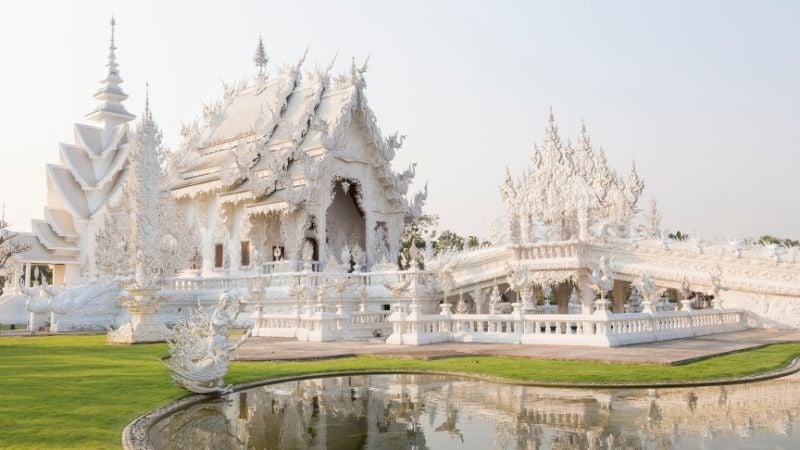
Image credit: patrickheagney via Canva Pro
Begin your Chiang Rai adventure with two of Thailand’s most visually striking temples. First, head to Wat Rong Khun, better known as the White Temple. Created by Thai artist Chalermchai Kositpipat, this glittering, all-white structure looks surreal.
Its design is symbolic, representing the path to enlightenment; crossing a bridge over a pit of reaching hands, past mythical creatures and mirrors that reflect your inner self. It’s easily one of the most unique temples in Southeast Asia.
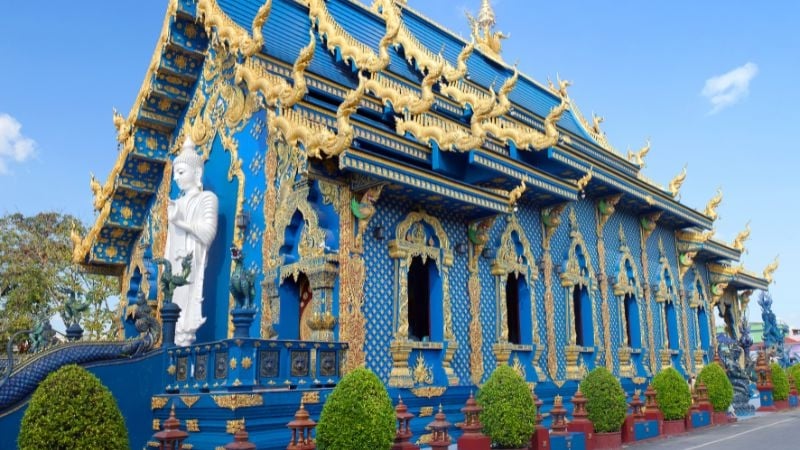
Image credit: Zzvet via Canva Pro
From there, make your way to Wat Rong Suea Ten, or the Blue Temple. While lesser known internationally, this vibrant, cobalt-hued temple is equally breathtaking. The richly decorated interior features a gleaming white Buddha surrounded by intricate celestial motifs.
Afternoon: Baan Dam Museum and Wat Phra Kaew
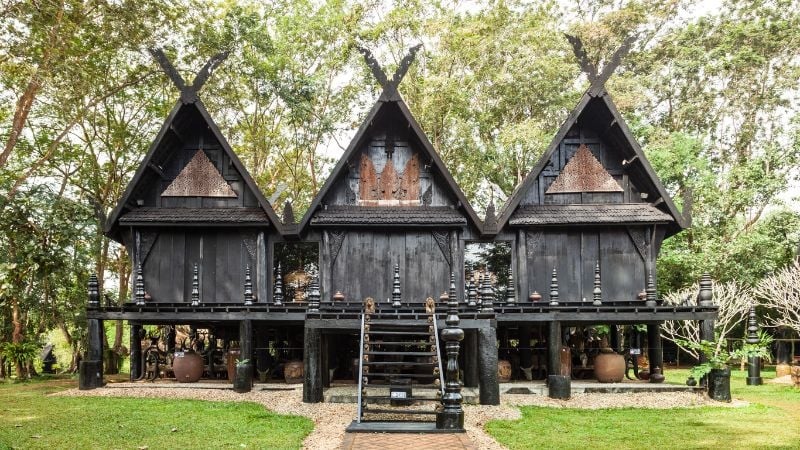
Image credit: Andrey X. via Canva Pro
After lunch, continue your cultural deep-dive with the Baan Dam Museum, also known as the Black House. This is a moody and fascinating art installation by the late Thawan Duchanee.
The complex features over 40 black-themed buildings filled with dark wood carvings, animal bones, and symbolic installations that explore themes of death, power, and nature. It’s strange, thought-provoking, and a change in tone from the bright temples of the morning.

Image credit: urf via Canva Pro
Round out the day at Wat Phra Kaew, one of the oldest temples in Chiang Rai and the original site where the Emerald Buddha (now in Bangkok) was discovered. The temple grounds are peaceful and shaded, perfect for a slower stroll.
Evening: Chiang Rai Night Bazaar
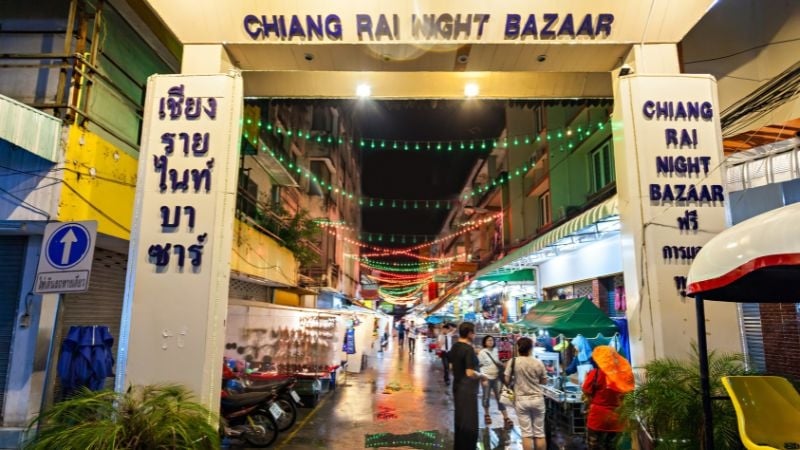
Image credit: Andrey X. via Canva Pro
Spend the evening at the Chiang Rai Night Bazaar, a cosy, laid-back market filled with local crafts, textiles and street food. Unlike the larger markets in Chiang Mai, this one feels more personal and less commercial.
You’ll find everything from handmade soap to hill tribe embroidery, with open-air seating and occasional live music performances to keep the mood lively.
Day 2: Exploring nature
Day 2 Option 1: Phu Chi Fa Sunrise + Waterfalls and/or Singha Park
Morning: Phu Chi Fa
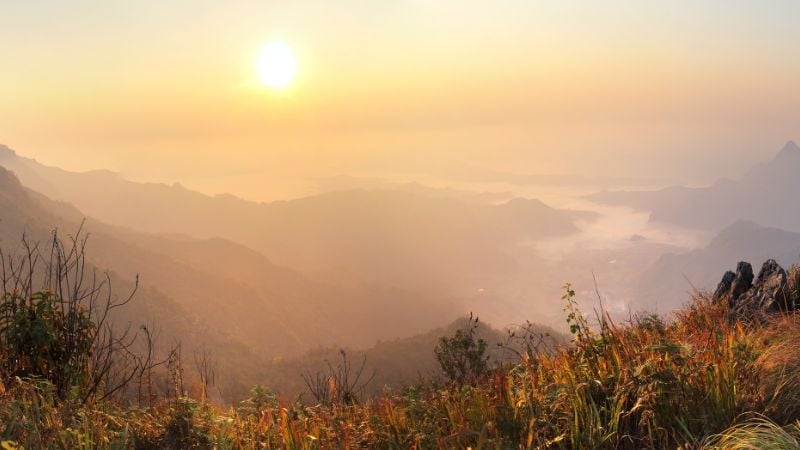
Image credit: goodze via Canva Pro
For those chasing a bucket-list sunrise, Phu Chi Fa delivers in spectacular style. You’ll need to leave Chiang Rai in pre-dawn, around 2.30am, to reach the trailhead in time. The drive takes about two and a half hours, followed by a 20 to 30-minute walk uphill in the dark. Bring warm clothing and a torch, as it can get cold before dawn.
At the summit, you’ll be rewarded with a jaw-dropping panorama. The sun rises over layers of mist and mountain ridges, with Laos visible just beyond the valley. The atmosphere is dreamlike, especially when the “sea of mist” blankets the landscape below.
If you’d prefer to start your day at a more normal time, you can visit Phu Chi Fa later in the morning instead. The mist may have lifted, but the mountain views remain beautiful.
Also read: 10 Best Hiking Trails in Thailand for You to Explore
Afternoon: Khun Korn Waterfall or Singha Park
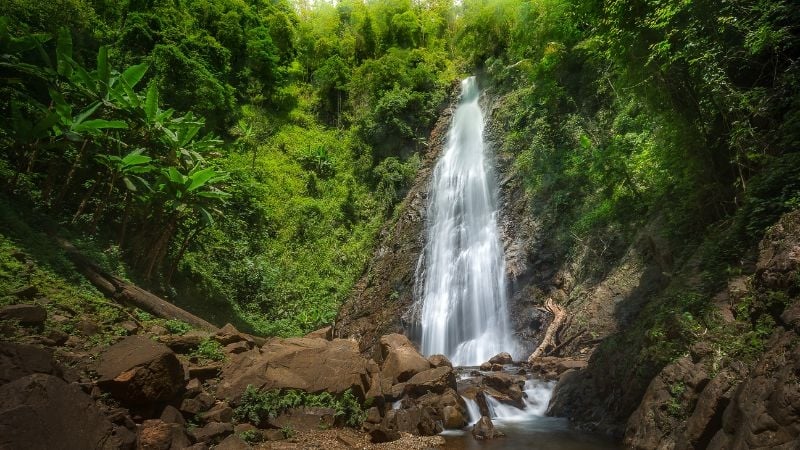
Image credit: Srongkrod via Canva Pro
On your return journey, stretch your legs at Khun Korn Waterfall. Reached via a shaded forest trail, the waterfall is tucked away in a quiet nature reserve. The trail is manageable for most travellers and leads to a powerful 70-metre cascade surrounded by dense greenery.
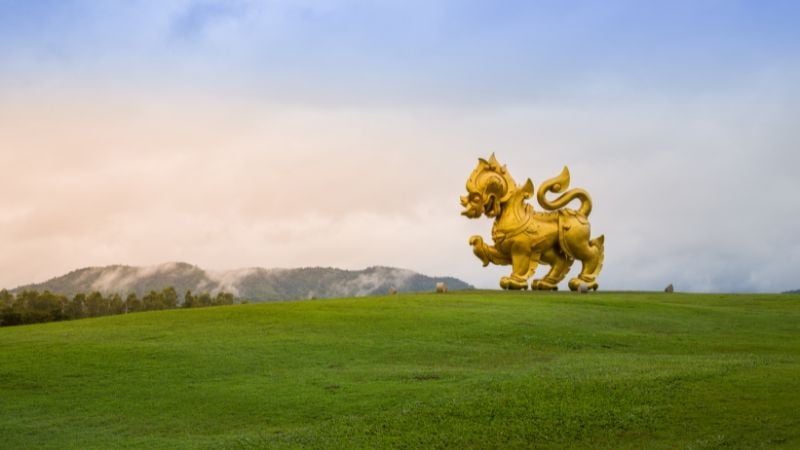
KoBoZaa via Canva Pro
Alternatively, opt for a gentler experience at Singha Park. Once a barley farm, it’s now a landscaped countryside retreat with tea plantations, flower gardens, cycling paths, and lake views. It’s perfect for those who want to unwind in nature without exerting themselves.
Evening: Return to Chiang Rai
Head back to Chiang Rai for an early rest after an early day. This could mean a foot massage, a simple dinner, or just resting back at your hotel.
Day 2 Option 2: Golden Triangle Day Trip
Morning: Golden Triangle & River

Image credit: Andrey X. via Canva Pro
If you prefer a more cultural experience without the pre-dawn start, the Golden Triangle makes for a fascinating full-day trip. Located where Thailand, Laos, and Myanmar meet, this region has a storied past shaped by trade, conflict,t and the opium boom of decades past.
Start at the Golden Triangle viewpoint, where you can look out over the Mekong and Ruak rivers as they converge at the border. A short boat ride along the river adds a different perspective, passing quiet fishing villages and stilted homes along the banks.
Afternoon: Hall of Opium & Chiang Saen
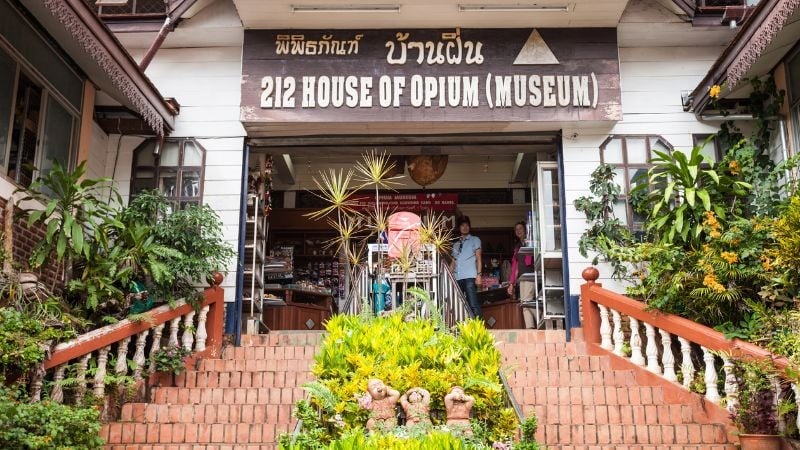
Image credit: Andrey X. via Canva Pro
Just a few minutes away is the Hall of Opium Museum, a well-curated and surprisingly moving museum that explores the rise and fall of the opium trade.
Before returning to the city, consider a short detour to Chiang Saen, a sleepy riverside town with ancient ruins, Buddhist stupas, and remnants of Lanna-era walls that date back centuries. It’s a quiet place that offers a glimpse into the region’s deep historical roots.
Evening: Return to Chiang Rai
After a full day of exploring northern Thailand’s borderlands, return to Chiang Rai for a relaxed evening in town.
Day 3: A relaxed town excursion before you go
Morning: Kok River Walk or Café-Hopping
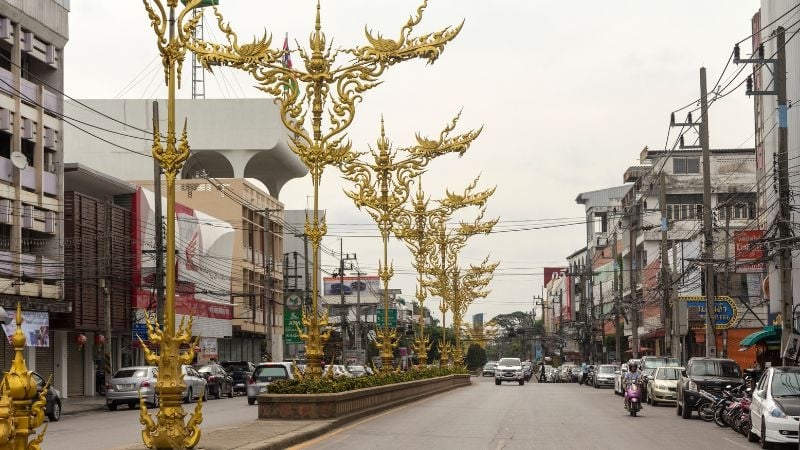
Image credit: Stefan Fussan | Wikimedia
After two packed days, your final morning in Chiang Rai is all about slowing down. Take a gentle walk along the Kok River, where the air is cool and the pace is unhurried.
Or settle in at one of Chiang Rai’s stylish cafés; Chivit Thamma Da is a local favourite for its colonial charm, while smaller roasteries like 22 Grams offer excellent coffee in hip, minimalist settings.
Afternoon: Oub Kham Museum or Souvenir Shopping
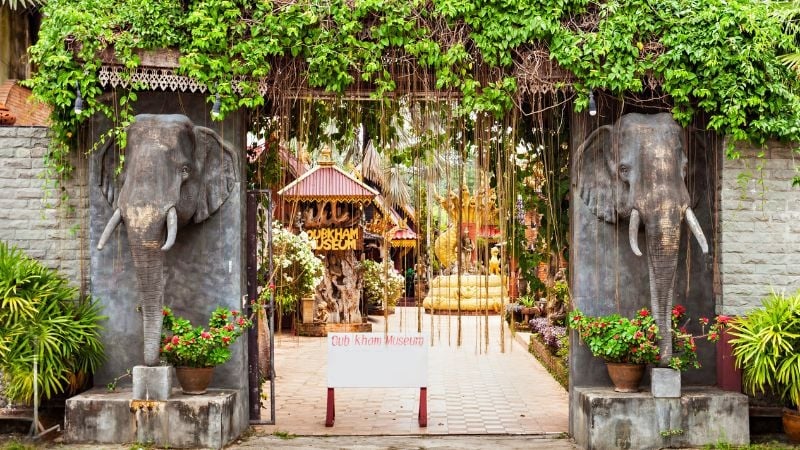
Image credit: Andrey X. via Canva Pro
If you have time before your departure, consider a short visit to the Oub Kham Museum. This lesser-known gem showcases artefacts from the Lanna, Shan, and Tai peoples, with beautiful textiles, throne rooms, and ceramics that tell the story of northern Thailand’s diverse cultures.
Alternatively, stroll through the local markets for last-minute souvenirs: handwoven textiles, herbal teas, and handmade soaps are all easy to pack and make thoughtful gifts.
Tips for visiting Chiang Rai
- Transport: Motorbike rentals and taxis work well in town. For further trips, book a car with a driver or join small group tours.
- Dress code: Shoulders and knees must be covered for temple visits. A scarf or shawl is handy to keep in your bag.
- What to pack: For nature days, bring proper footwear, insect repellent, sunblock, and a light jacket, especially if you’re heading to Phu Chi Fa.
- When to go: November to February offers the best weather with cool mornings and clear skies.
- Pace yourself: Chiang Rai rewards those who take it slow. Leave time to linger, sip, and enjoy the space between sights.
Also read: 10 Stunning Natural Wonders in Bali for Nature Lovers
Consider Chiang Rai for your next Thailand getaway
Three days in Chiang Rai gives you enough time to fully experience its whimsical temples, misty mountaintops, and welcoming local charm, and the city leaves an impression that lingers long after you’ve gone.




